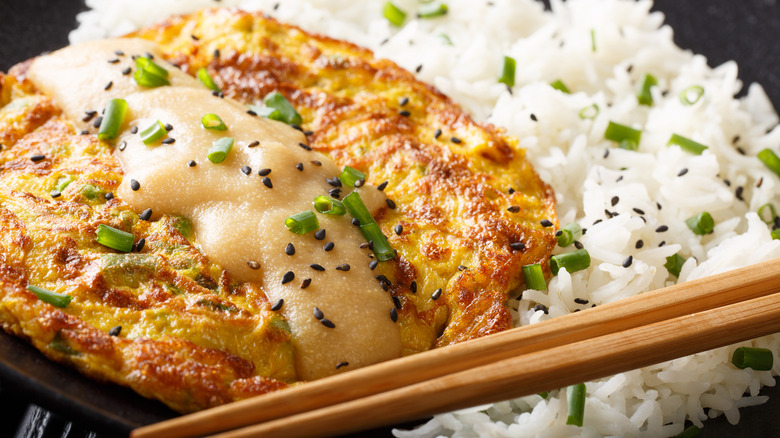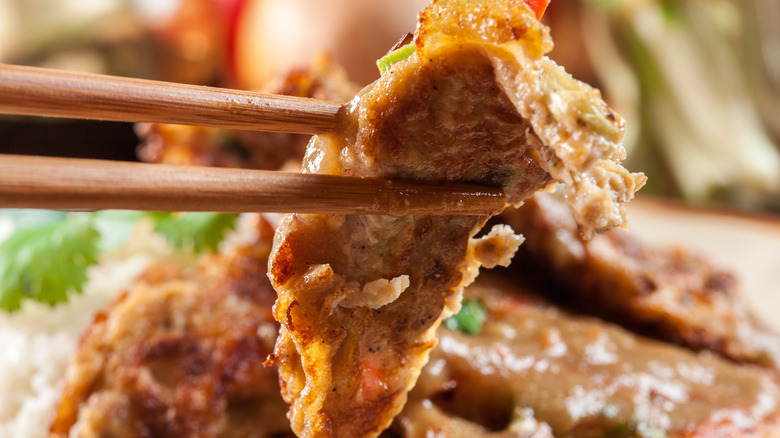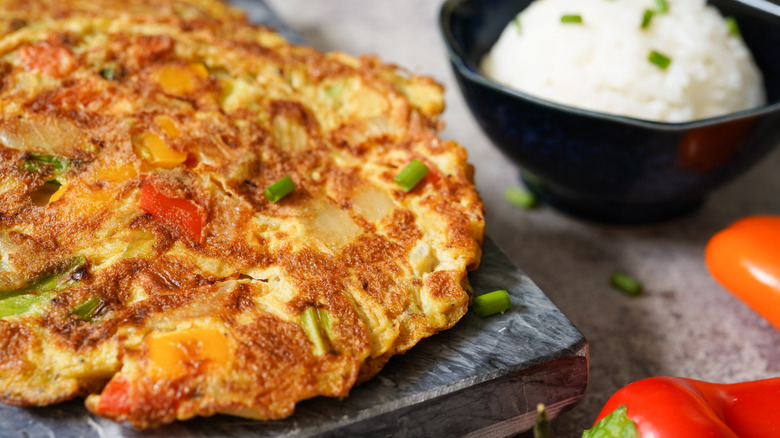What Is Egg Foo Young And How Is The Dish Related To Omelets?
Egg foo young is an American favorite, and one that was probably created in this country. Although certainly inspired by Chinese cuisine (that of Guangdong province, specifically), it appears to have evolved over time in America. When this occurred exactly is debatable since several similar variations were served by Chinese restaurants across America during the mid-1800s. The name egg foo young, in fact, doesn't seem to have appeared on menus until the first decade of the 20th century.
Although its history may be unclear, its popularity is well-documented. Sinclair Lewis' "Main Street,” a novel first published in 1920, mentions the dish in relation to Minneapolis, Minnesota, indicating that egg foo young had penetrated America's heartland by this time. As The New York Times recalls, Lewis' book came out at a time when people were increasingly exploring urban Chinatown neighborhoods in search of new culinary experiences. By the 1950s, meanwhile, Chinese food had progressed beyond America's cities to become a suburban staple as well.
How egg foo young is made
One of the oldest extant recipes for egg foo young dates back to 1911, in the cookbook "Chinese Cookery in the Home Kitchen" by Jessie Louise Nolton. The recipe features a list of ingredients that includes eggs, pork, potatoes, shredded onion, bamboo shoots, and celery. Over the years, the dish has evolved to include a variety of meat and vegetable combinations, and pork is sometimes replaced with beef, chicken, or even shrimp. A few things have stayed the same, however: Eggs are always a base ingredient — as they are for all omelet style dishes — and there's invariably a brown sauce added.
Egg foo young is often cooked in a wok, and it gets its crispy texture and fluffy pancake-like shape via deep frying in oil at temperatures of up to 350 degrees. Deep frying isn't necessary, of course, when making egg foo young at home. Nor is the wok, for that matter. Simply add your ingredients of choice to whisked eggs in a bowl, then pour them into a skillet, and cook them as you would any omelet.
The brown sauce, or "gravy," meanwhile, is made separately from a mixture of cornstarch, sesame oil, and oyster and soy sauces. Rice is commonly served as an accompaniment.
The relationship between egg foo young and traditional omelets
Although it could be described as a Chinese omelet, Egg foo young evolved from a different cultural tradition than that of most omelet dishes. The European style omelet, for example, has its roots in 16th-century France, although similar dishes may also have existed in Ancient Persia and Ancient Rome.
In France, the term "omelet" wasn't in common usage prior to the publication of the first compendium of home cooking recipes in the 17th century, although the omelet had likely been made for several centuries by that point. Variations of the dish have arisen ever since, and in many countries. Spain's iconic version, tortilla de patatas, for instance, has been around since at least the early 1800s.
Egg foo young meets the standards of the omelet, in that it's made with beaten eggs and includes fillings. But evolving as it did out of the Chinese culinary tradition, it likely wasn't influenced by the European style omelet (at least not directly), and outside of eggs and meat, shares few common ingredients. Interestingly though, egg foo young is thought to have influenced the creation of the Denver omelet, which can be traced back to Chinese railroad workers.


